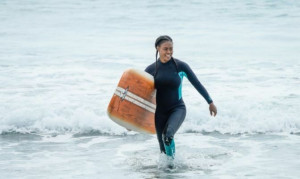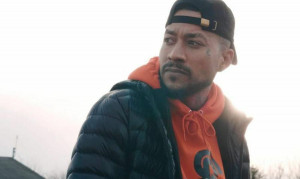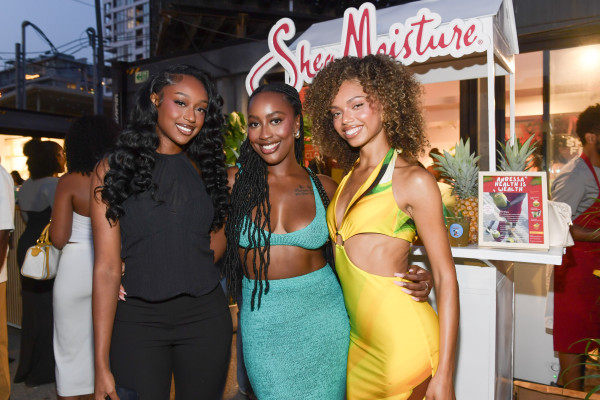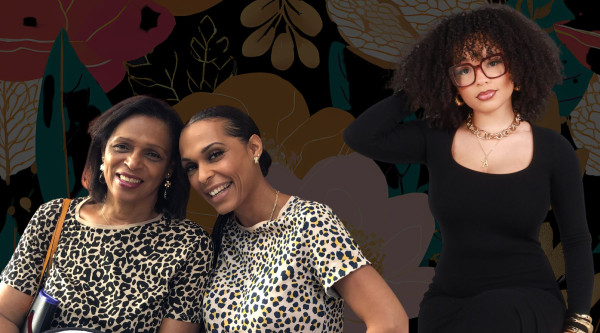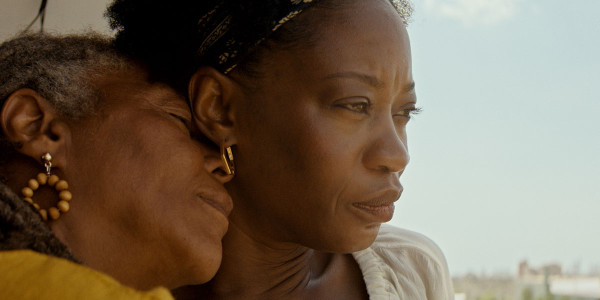The story follows Sydney, who, in the midst of a quarter-life-crisis, bumps into her perfect-on-paper ex-boyfriend. It's awkward. How could it not be, especially since Sydney still doesn't know what exactly went wrong between them. So she summons her ovaries and finds the courage to ask why it didn't work. The last thing she expected him to say was, "it was your hair."
We asked the film's writer and lead actress Aisha Evelyna to give us her thoughts on why the "Black hair" conversation is still relevant.
Aisha Evelyna
Three years ago, at age 23 when I sat down to write the first iteration of this story, I was at a place in my life where I was working very diligently to liberate myself from patterns of thinking that kept me from being able to fully take up space.
Observing how I moved through the world as a person of colour and first generation Canadian, I found that a large part of my identity subscribed to eurocentric ways of living. I could go to “the cottage” with my friends, love Kraft Dinner, look like a hipster that lived in Parkdale, but try as I may, I could never fully look the “part” that I was once so desperately dying to play. For me, this feeling of isolation, of otherness, of what I’d like to call “less - than - ness”, manifested itself in my hair.
Over a decade ago, Chris Rock started the mainstream conversation about Black women and the lengths they go to make their hair more palatable for North American Society with his film Good Hair. A society where the pervasive narrative structure reinforces closeness to whiteness as the sterling ideal. Chris Rock may have opened the door on this topic, but as our film’s director, Isa Benn, (recent grad of the CFC’s esteemed Director’s Lab) noted to me once in conversation, Chris Rock never actually delves into the why with regards to his exploration of the Black Hair industry and its associated culture.
We still need to talk about the “why”. And that’s where our film ShoeGazer begins. Why would a woman spend her rent money on high quality hair for a weave? Why does a Black woman feel so compelled to wear a wig or weave in order to feel beautiful? Is it to be worthy of love? An act of self preservation?
These are the queries that our film strives to unpack with hopes of illuminating a sameness that exists within all of us, kinky hair, or not.
Now, I would be in the wrong if I did not note that the landscape is changing and we are seeing a surge in the visibility of stories that pertain to those who are marginalized. With this revolution in the types of stories we are exposed to as a society, the reciprocal relationship between art and culture are beginning to positively reinforce each other. Black women are now wearing their hair how they want, in its natural form, if they so choose, and they are being embraced for it.
The acceptance these women have shown themselves, and the acceptance that others are conversely showing them is finally arriving, but we as a culture should use this newfound confidence as momentum to look inward and begin to unearth the shame surrounding our hair.
Now to play devil’s advocate, yes, there are Black women who, unlike me, were able to love and choose their curls from a young age. However, for the women like myself who are only learning the true texture of their hair well into adulthood, the idea of a natural hair journey, or “transitioning”, is a very personal and rearranging experience where one is forced to confront what it means to have Black girl hair, what it means to be a woman, and ultimately what it means to be Black.
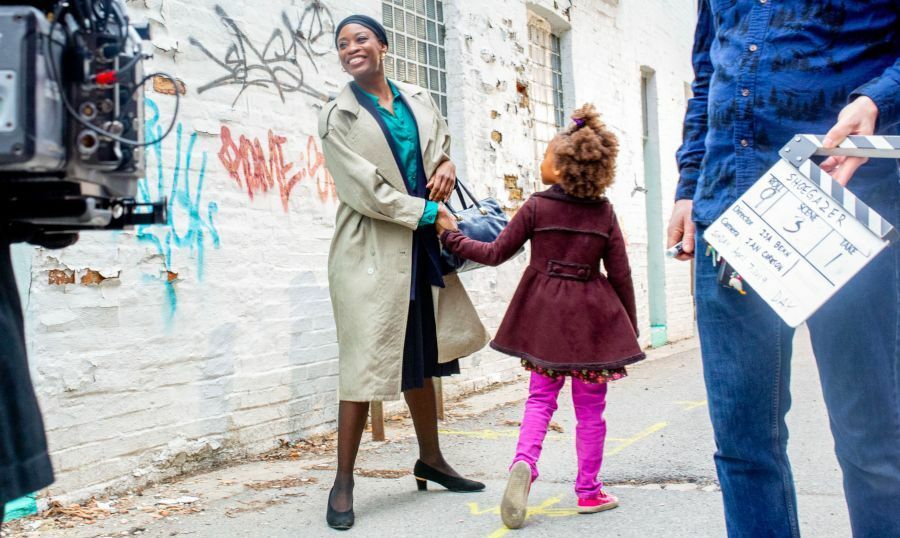
This juncture is exactly where we meet our film’s protagonist, Sydney. I titled this film ShoeGazer for a myriad of reasons but mainly because we watch Sydney shrink herself as she moves through life, eyes fixed toward the ground, so that she can simply get by. Sydney is at odds with her hair, Blackness, and essentially her biology, and because of this conflict, she has made herself small.
As a disclaimer, our low budget film which has been expertly produced by the lovely Rachel Cairns (One of Now Magazine’s top 10 theatre artists of 2018) and subsequently this essay, is not to shame any woman for altering her appearance in any way, especially women who wear wigs and weaves. As a matter of fact, as I type this piece, I am sitting on a plane with my VERY long Box Braids freshly installed and I feel like a cross between Janet Jackson in Poetic Justice and Rihanna.
My argument is, we as a society (women especially) who are bombarded by messages of what is ideal from popular culture can find self love, confidence, and autonomy within ourselves by looking at the why. Why do we get a shellac manicure every weekend? Is it because we want to land a man? Or because we feel like we SLAY as we watch our fingers dance across our keyboards when we type emails to clients from our desk on a Monday morning?
I wrote this story and enlisted the efforts of many incredibly talented co-creators to make this film as a means to help myself understand the why. Why I felt like I needed to relax my hair. Why I installed countless weaves over years when I hated it. Why I felt like the authentic me was not enough.
Coupled with the commitment to exploring the why, this film is an offering to the masses that I hope can foster the conversations that dissect the why and hopefully spark the bravery that is required and necessary when we venture down the road of self discovery and introspection.
It is no secret that this road is long and winding, and I personally only feel as though I’ve travelled a few metres, but the energy, emotions, fear, and maybe even tears expended to truly understand oneself on the journey toward self love and acceptance are worth it. I promise.
In ShoeGazer, we watch Sydney start to ask why, and I am not completely sure if she finds the answers that she is desperately searching for, but she has started the process and I truly believe that is all we can really hope for, to start, and when we need to, take a breath, look deeper, and start again.
All photography by Yannick Anton.
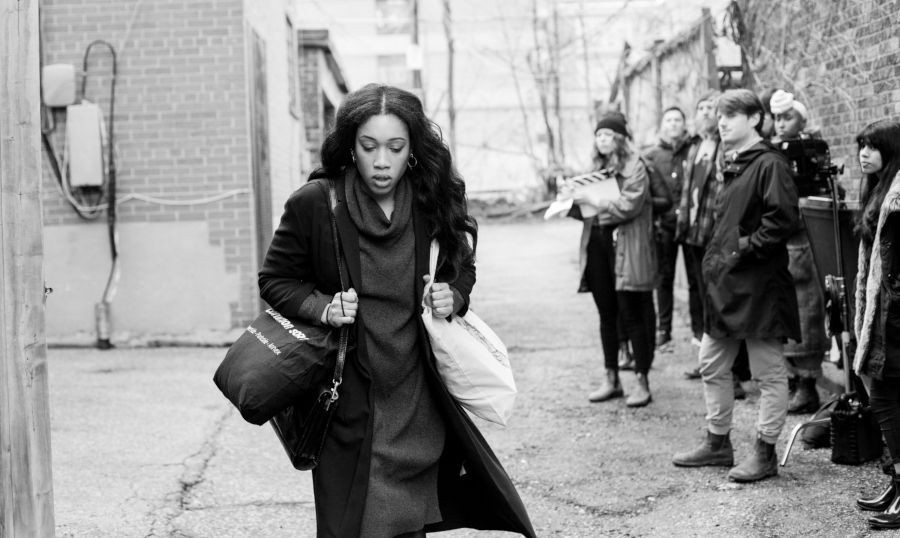
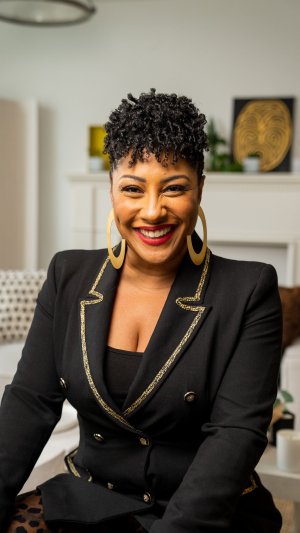 By
By 




